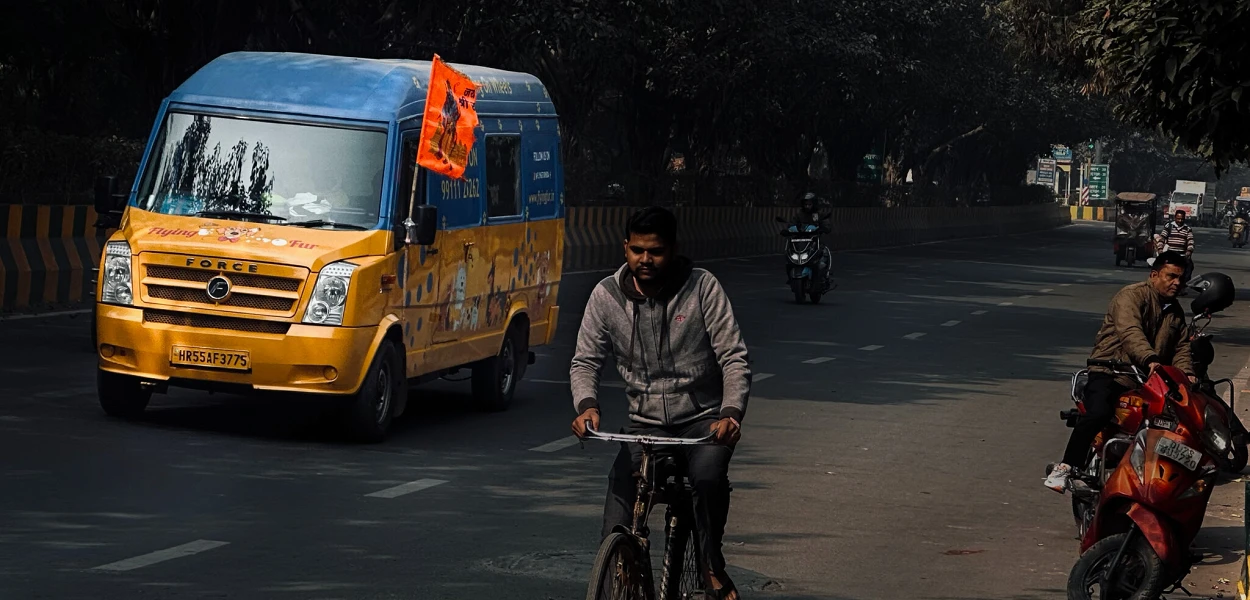
India’s Christians increasingly vulnerable after temple consecration
When a new Hindu temple was consecrated in the northern state of Uttar Pradesh on January 22, it was marked by a display of saffron-colored flags across India. These flags, which symbolize Hindu nationalism, have heightened the sense of insecurity among the Christian community, who face escalating attacks.

The temple in Ayodhya city represents more than just reverence for the Hindu deity Ram. Hindus view its establishment as a victory following a historical dispute with the Muslim minority. But it also carries serious implications for the Christian community. India’s Christians are increasingly vulnerable, according to local CSI sources who assist Christian victims of persecution.
More politics than religion
Significantly, it was not a Hindu religious leader who presided over the ceremony to consecrate the Ram temple. Instead the honor fell to India’s prime minister, Narendra Modi, who has come to embody Hindu nationalism. The “Hindutva” ideology that he represents has been driving the persecution of India’s Christian minority for over two decades.
The conflict surrounding the site where the temple now stands dates back centuries. Hindus claim it as the birthplace of Ram, but for nearly 500 years, a mosque stood on the site. Legend has it that the Muslim emperor Babur demolished a temple to construct the mosque. During British rule, the site was divided between Muslims and Hindus. Tensions escalated in 1949 when Hindus placed an idol of Ram in the Muslim-allocated area.
The Bharatiya Janata Party (BJP), to which Prime Minister Modi belongs, vigorously campaigned to build a temple to Ram at the mosque site. In the 1990s they intensified their efforts. When a Hindu nationalist mob illegally demolished the mosque in 1992, it triggered widespread violence and thousands of deaths.
The BJP’s politicization of the dispute aided its rise to power in 1998 and marked the emergence of Hindu nationalism as a significant force in Indian politics. The BJP is influenced by the principal Hindu nationalist organization in India, the Rashtriya Swayamsevak Sangh (RSS), or “National Volunteer Organization.”
Saffron flags
In recent weeks, saffron flags bearing an image of the Ram temple have become a common sight on roads, in residential areas and on vehicles. The color saffron initially symbolized devotion to Hinduism. But since the 1990s campaign for the temple, it is predominantly associated with the Hindutva ideology.
For ethnic and religious minorities, the saffron flags are a stark reminder of their marginalized status in a rapidly changing socio-political landscape. A series of attacks following the temple’s consecration testify to this.
Attacks on Christians
One such incident occurred in the central state of Chhattisgarh. There, members of a Hindu nationalist group known for their participation in Ram temple rallies assaulted a group of Christians. They confronted and beat the victims, who had gathered for a lunch in Basudopur village in Kunkuri region and were on their way back. The violence escalated to the point where women trying to intervene were dragged onto the road, and a pastor, identified as Mahananda, was knocked unconscious. The Christians were warned not to visit the village again.
Those accused of the attack filed a police complaint against the Christians, alleging that they had pelted stones at items being used for Hindu worship. This counter-complaint follows a pattern observed in attacks on Christians in India, according to CSI’s sources. Very often, victims of religiously-motivated violence are targeted with inflammatory accusations after the fact.
In adjacent Madhya Pradesh state, a viral video showed a mob attaching a saffron flag to the cross of a church in Jhabua district, amidst chants of “Jai Shree Ram,” or “Hail Lord Ram.”
In parts of the eastern state of Jharkhand, local Hindu nationalists are conducting daily morning gatherings in public areas and closely monitoring the activities of members of the Christian community, according to a CSI source. They added that this surveillance has significantly hindered the movement of their staff.
Mark of religious identity
The visual dominance of saffron has tangible implications for minority communities, especially in the current climate where religious identity is increasingly becoming a marker for allegiance and patriotism.
A campaign of door-to-door fundraising across the country for the temple’s construction exacerbated the situation. In several localities, those who did not contribute – often members of minority communities – were subtly marked out, potentially making them targets for local Hindu nationalist groups, CSI’s sources say.
Election issue
The consecration of the temple, which is still not complete, was strategically timed. The BJP is using the issue to solidify its Hindu voter base ahead of national elections scheduled for May 2024.
However, this political maneuver poses the risk of further estranging minority communities. Minorities, especially Christians, are already experiencing a marked increase in violence and harassment.
In 2021, there were at least 486 recorded incidents of violence against Christians, making it the most violent year for the faith community in India’s history, according to the United Christian Forum, a coalition of Indian Christian organizations.
In 2022, close to 600 acts of violence occurred. By 2023, the number had risen to well over 600. These incidents ranged from physical assaults to economic boycotts and social ostracization, often under the guise of combating alleged forced conversions.
Growing authoritarianism
The situation is further complicated by India’s rapid shift towards authoritarianism. There are increasing concerns about the independence of the judiciary. The media landscape is predominantly pro-government or engaged in self-censorship; and civil society is grappling with financial constraints after the government revoked the licenses of non-profit organizations to receive foreign donations.
In the midst of these grave challenges, CSI’s partners in India are bracing for a challenging year. Despite the difficulties, they remain steadfast in their commitment to serve, prepared to navigate the complexities of the current socio-political climate.





